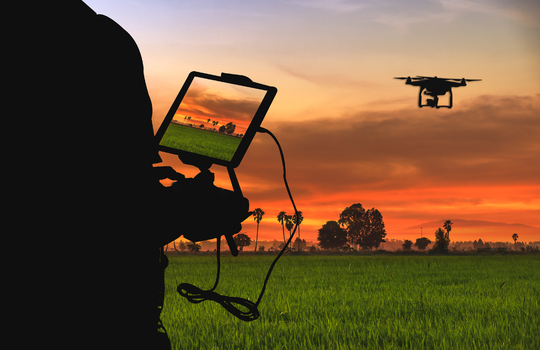
The Australian Government has moved to strengthen the agriculture sector’s biosecurity provisions, assessing a raft of new technology propositions designed to help prevent the spread of biological pests and diseases.
The projects, funded under the Government’s $25.2 million Biosecurity Innovation Program, include an array of virtual reality, DNA matching, drone, 3D X-ray, and import-screening technologies designed to help mitigate biohazards that could threaten Australia’s more than $60 billion agricultural sector.
The projects are being managed by the Department of Agriculture, Water and the Environment, in partnership with the business sector, universities, and research entities.
Through the use of newfangled bio-detection and monitoring technologies, the measures are designed to stop the entry of invasive pests and diseases, as well as assist checks by staff at border control and entry points.
Australia has managed its biosecurity programs fairly successfully until now, the Department said; however, the agricultural sector remains increasingly vulnerable to new threats, especially as volumes of passenger and cargo traffic continue to grow. Australia’s 60,000 kilometres of coastline also opens many pathways for the introduction of exotic pests and diseases, it stressed.
The Department said it has continued to screen, inspect, and clear millions of people, mail parcels, baggage, ships, animals, plants, and cargo containers entering Australia. However, further growth in inbound traffic presented new challenges, requiring, it said, a renewed focus on technology solutions to manage persistent biological threats.
By 2025, the Department estimates a 72 per cent growth in inbound passengers traffic, alongside 28 per cent jump in shipping, and 100 per cent jump in containerised cargo.
Technology tackles biosecurity threats
In an increasingly interconnected global economy, biosecurity threats have inevitably escalated, said Minister for Agriculture David Littleproud.
Future funding would go towards various technology-backed innovation projects to protect Australia’s agricultural industry, offering “new approaches” to monitor imports as well as collect and share data.
Among these, DNA fingerprinting was being explored to help monitor the importation and quarantining of dogs, together with better control over the compliance and import conditions.
Virtual reality technology was assessed as a means to train staff in a simulated setting, together with the use of remote sensing technologies to capture field data and build analytics and forecasting capabilities.
The forecasting would enable agriculture staff to map the danger zones impacting agricultural areas, while being proactively managing the allocation of resources and gaining a better picture of the pest or disease control needs.
In the future, the expanded use of drones could help identify and control Australia’s swelling feral pig population. Aerially deployed thermal sensors are being examined to track and quantify feral animals in real-time, especially in remote areas not easily accessed by field officers.
Aerial surveys can address the difficulties of accessing remote habitats and detecting the movement of feral pigs, Littleproud noted, offering a valuable tool for population control.
“This will help in our fight to protect Australia from African swine fever and other exotic diseases carried by pigs,” he said.
Additionally, 3D X-rays would enable the agriculture sector to automatically detect the flow and germination of seeds, offering greater precision for farmers to plant, track the germination process, and manage their output and crop.
Another project involved the detection of pests on plants along the borders, together with better control of the pest, Xylella, an invasive bacterial pathogen that destroys plants, including high-value crops including grapevines, citrus, and olive trees.
Biosecurity planning as the pressures mount
Australia’s agriculture, fisheries, and forestry production contribute around $66 billion to Australia’s economy. More broadly, the Department of Agriculture, Water, and the Environment has invested in comprehensive biosecurity research through its Biosecurity Innovation Program.
“Our biosecurity system is under growing pressure from the number of people and goods coming into Australia and these numbers are forecast to increase,” the Department said.
Additionally, the National Farmers Federation (NFF) conservatively estimates the economic cost of invasive species at more than $13 billion a year, though the precise figure remains unknown.
The NFF has canvassed improved surveillance and diagnostics, alongside better collaborative sharing of data and intelligence between industry and government to help to mitigate the introduction of pests or novel disease.
An Agricultural Competitiveness White Paper published by the Department of Agriculture, Water and the Environment in 2015 underlined efforts to strengthen long-term biosecurity surveillance and analysis programs under a $200 million initiative.
Further biosecurity investment, the paper stressed, would improve Australia’s ability to detect and manage biosecurity risks early and, in turn, minimise damage to farmers, the environment, and the economy.
This was supported by the introduction of the Government’s Biosecurity Act 2015, designed to protect agriculture and the broader ecosystem.





